This entry is also available in: Russian Chinese (Traditional)
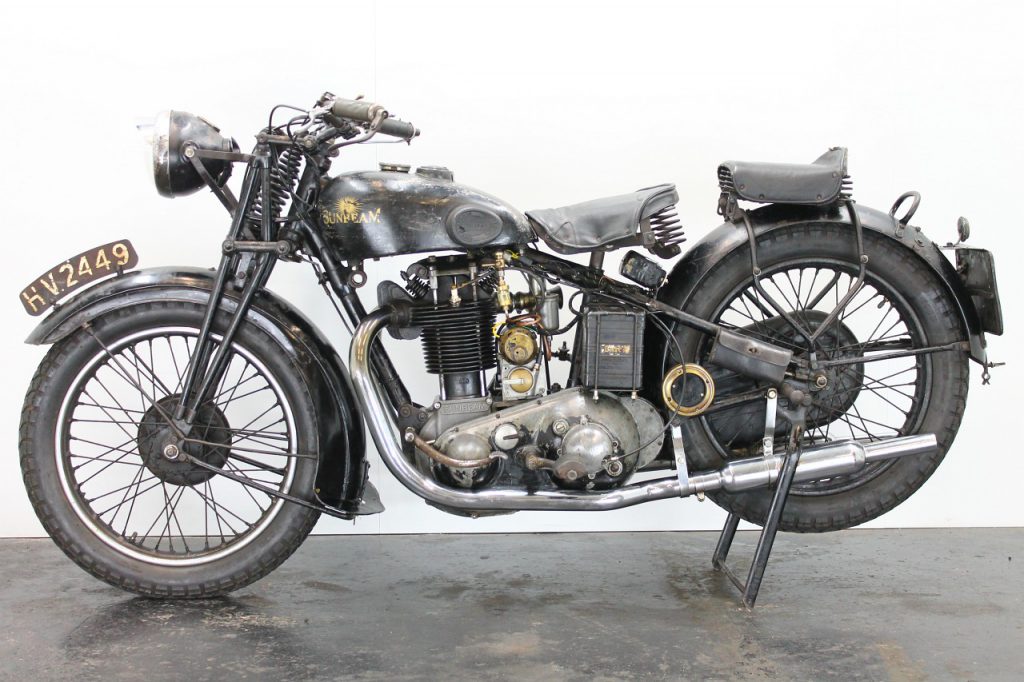
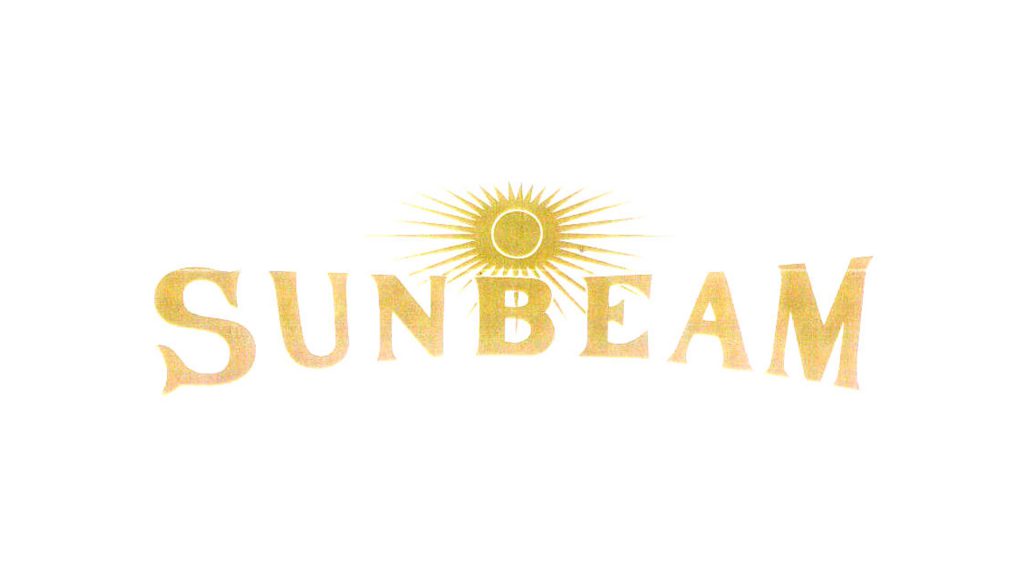
We used to think about motorcycle production as the heir to bicycle or military factories. We know the examples when motor production arose on the basis of the production of vacuum cleaners and fans, but that the manufacturer of cups became a motorcycle magnate… This is just outstanding!
John Marston began to build his empire in the 19th century. In 1871 he purchased a small factory on Pool Street in Wolverhampton and began the production of household utensils. In the product list you could find bread plates, lids for dishes, pots, pans, kettles and even footpads. Back then the company was called John Marston Limited.
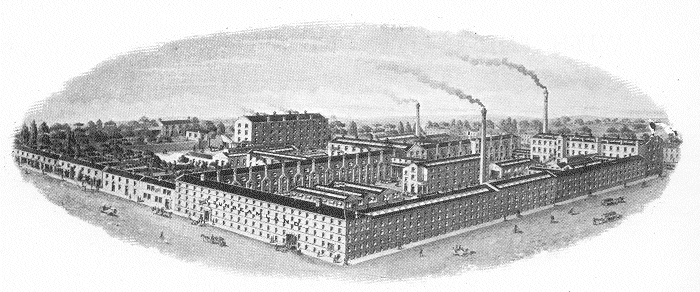
The Sunbeam trademark appeared in 1888, simultaneously with the beginning of the production of bicycles, and disappeared only in the late 1930s, when all the developments, along with the trademark, were sold to AMC.
During 1903 and 1904 John Marston and his sons were experimenting with motorcycles. It is thought that they were using a Swiss “Motosacoche” engine mounted on a modified Sunbeam bicycle. Some of the Sunbeam employees were clearly giving thought to motorcycle production because in 1903 James Morgan, the Deputy Works Manager patented a “Little Oil Bath” for chain driven motorcycles. This work came to an end in 1904 when one of the company’s employees died during the test-drive of the experimental prototypes. After the accident John Marston decreed that no more work would be carried out on these machines in his factory.
IIn 1911 the plant was significantly expanded. The rest of the houses on Pool Street were demolished to make room for a new construction. When the work was completed, the factory looked the same as today, taking the entire eastern side and the northern end of Pool Street. One of the buildings that is not there today can be seen in the upper right corner of the photo. It stood on the opposite side of Jeddo Street and was connected to the main plant by a covered bridge.

Despite a long past incident, it was not reasonable to stay away from the fast-growing motorcycle market, so in 1912 the production began. The first serial machine was designed by Harry Stevens, one of the four Stevens brothers who ran A. J. Stevens & Company Limited. Later, Harry will become really famous thanks to the A.J.S. motorcycles.
The first machines went into production in 1912 and were soon a great success, eventually overshadowing the company’s bicycles. They became known as “The Gentleman’s Motorcycle”. Initially sales were only conducted at existing bicycle sales depots. The machines were hand built, with a selling price of 60 guineas. Almost immediately they featured in competitions and were very successful. Two Sunbeam machines gained gold medals in the London-Exeter-London trial, in December 1912, and the Sunbeam name became well-known to enthusiasts throughout the country.

With the outbreak of the war, Sunbeam began to develop new machines for use in the armed forces.

In 1915, the JAP engines almost disappeared from the market due to sales to the War Department, and so the machine was modified to accept a Sunbeam 6 HP twin engine, and was subsequently supplied to the armies of Great Britain, Russia and Italy.
During 1916 large numbers of Sunbeam motorcycles were supplied to the Russian Army for use on the Eastern front. A new 8 hp twin engine with a 3 compartment fuel tank was developed for this purpose. It was fitted with a machine gun and armored sidecar. The machines were powered by a Swiss 996cc MAG engine, and had Brampton ‘Biflex’ forks.
In 1919, after the State permission to return to the production of civil equipment, Sunbeam released a new catalog, in which re-introduced the models of 1916. Despite the fact that prices grew until 1921 due to post-war inflation, the new models were well received by the general public. The press believed that they were the most beautiful machines on the road and were nicknamed “Rolls Royce among singles”.
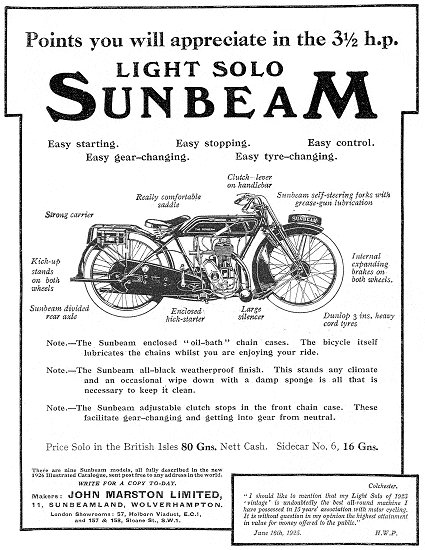
Two new models were introduced in 1922: 3.5 hp “Longstroke T.T.” and 4.25 hp Sunbeam, which was mainly sold with a sidecar.
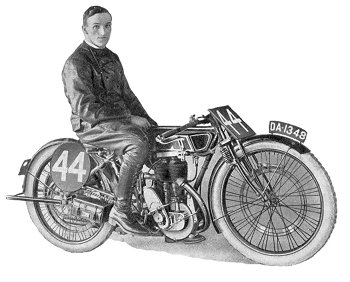
In 1924 the 8 hp twin was discontinued, and a new model numbering system introduced:
| Model 1. | 2¾ HP with full road equipment |
| Model 2. | 2¾ HP with less equipment |
| Model 3. | The old ‘Standard’ 3½ HP model |
| Model 4. | The old 3½ HP now fitted with a 4¼ HP engine |
| Model 5. | The old 3½ HP ‘Solo’ |
| Model 6. | The old ‘Longstroke’ |
| Model 7. | A 4-speed version of the 4¼ HP machine |
| Model 8. | ‘Standard’ 350cc OHV machine |
| Model 9. | ‘Standard’ 500cc OHV machine |
| Model 10. | 350cc ‘Sprint’ OHV machine |
| Model 11. | 500cc ‘Sprint’ OHV machine |
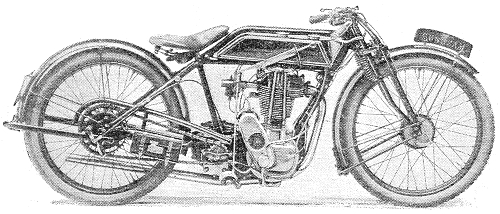
In 1925 the Government banned racing on public roads; the last meeting took place at Hereford on 4th April 1925.
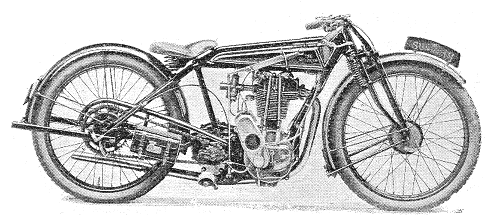
The ‘Sprint’ models were discontinued, and in 1926 prices fell by about 5 guineas per model. The cheapest machine was then sold for £72, and the top of the range ‘Model 9’ sold for £105.

Of course the general depression did not help. Motorcycle sales slumped and the company contracted. The machines were still good, but they had undergone a great change, no longer being the ‘Rolls Royce of motorcycles’.
Luckily, John Marston had decided to begin producing radiators in 1906 for the growing car industry (initially in Temple Street, then at Sunbeamland). It saved the company from bankruptcy.
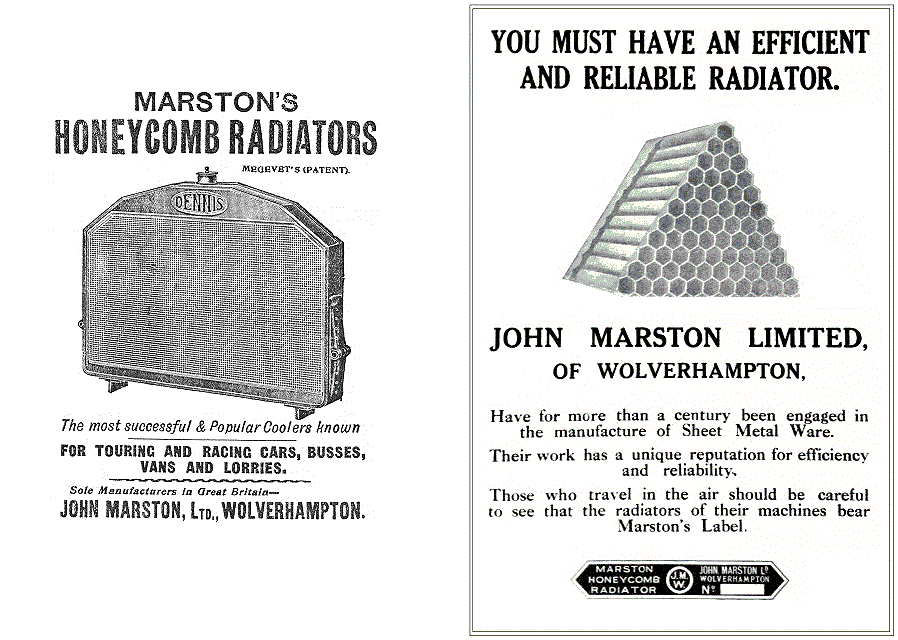
In November 1929 production of the Deloford portable boat began in an empty workshop on the top floor. The boat, made of plywood and rubberized sheet, could be packed flat for easy transportation. A lot of orders were received; the venture appeared to be a great success.
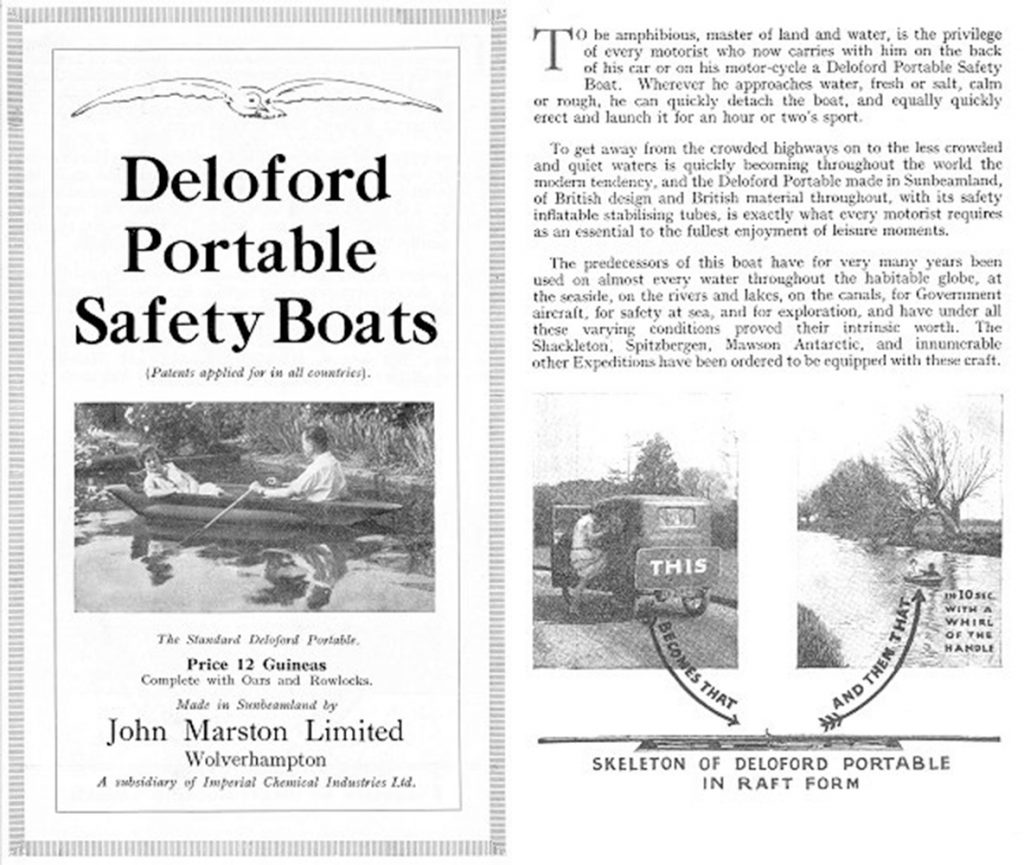
In 1929, Sunbeam finally adopted the saddle tank, which had been invented by Howard Davies in 1924. Sunbeam was not the only company that was late with the introduction of the saddle tank, rather the opposite. The only company that implemented such an improvement in the series since 1924 was the Brough Superior.
The year of 1930 started badly. Sidney Bowers was taken seriously ill, and on January 26th, replaced by accountant Graham Bellingham. Sales were falling because of the Depression, and a new range of models was announced in readiness for the Motorcycle Show.
A number of changes to the range of models took in 1930. The Model 6 ‘Longstroke’ was restyled and called ‘The Lion’, which was named after one of the ICI trademarks. The design of the fuel tank was a departure from usual Sunbeam practice. The soldered petrol tank was replaced by a bought-in welded and chrome plated tank.
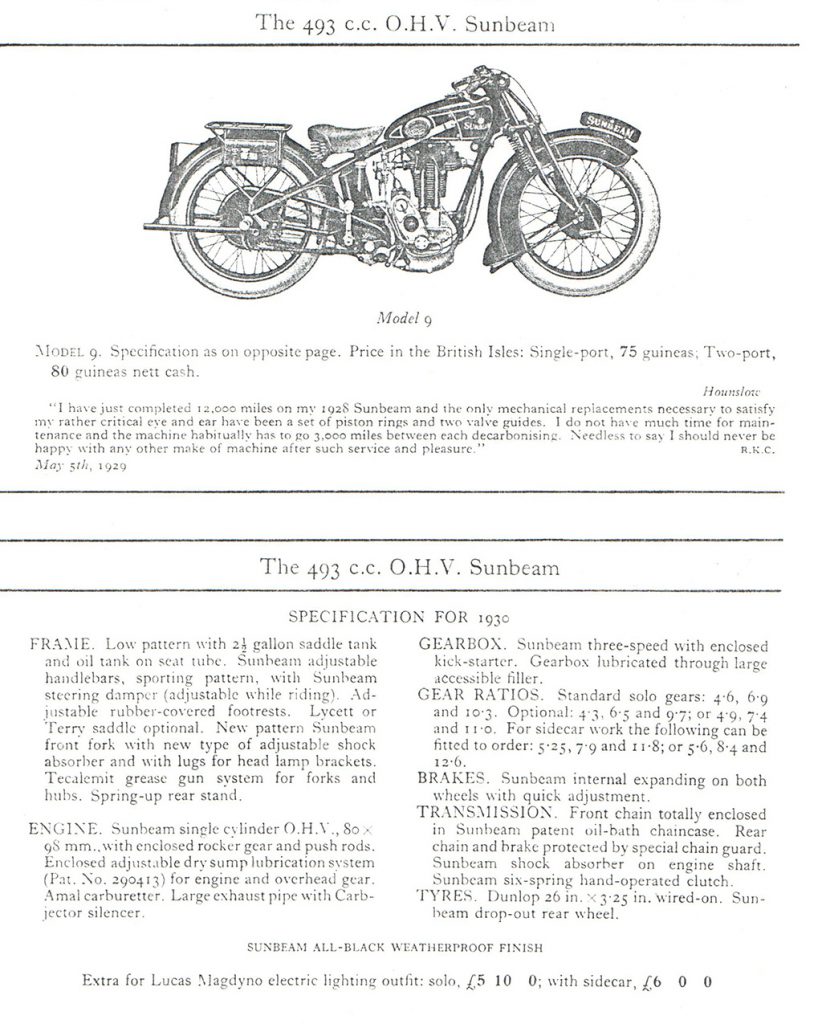
There was also the new 350cc Model 10, which had an overhead valve engine, and was designed by Stephenson and Greenwood. It had a three speed gearbox, was lightweight and economic on fuel. Fuel consumptions of over 100 m.p.g. were not uncommon.
In the new range, the Druid-type forks were replaced by Webb-type centre spring forks, and soldered petrol tanks were discontinued (except on the Model 90) in favour of the welded, chrome plated bought-in type that was fitted to the ‘Lion’.
In 1931, prices were reduced due to the continuing Depression, and the company adopted more internal economies in an attempt to reduce manufacturing costs.
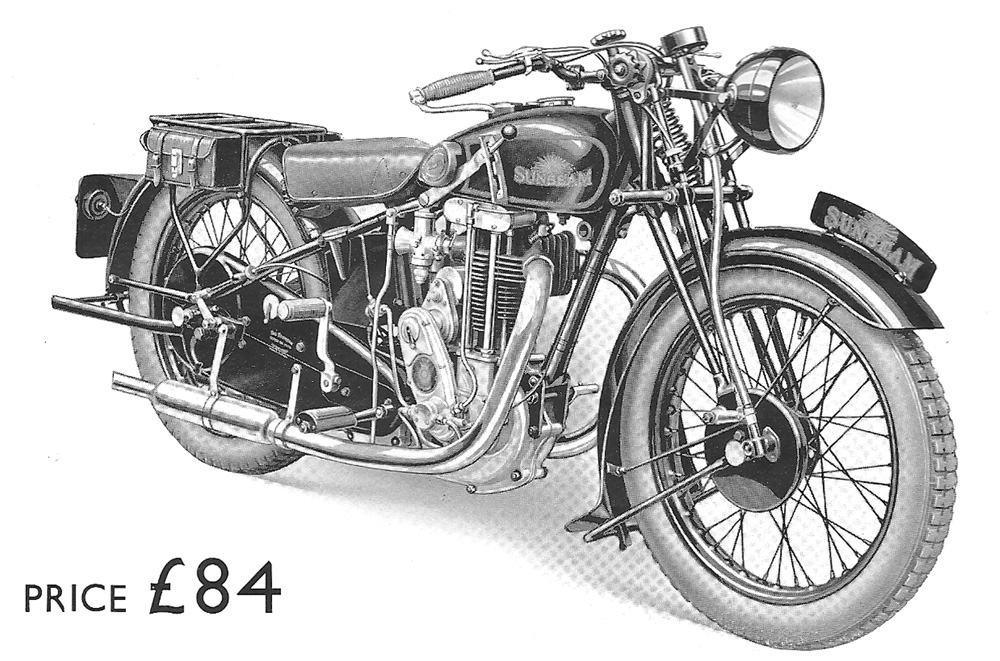
The whole Sunbeam range underwent major changes in 1932, with the introduction of a very robust constant mesh four-speed gearbox (the AW series), and a much –revised top end for the engine. The new gearbox was based very much on the 1920 constant mesh ‘box as used on the “Standard” 3 ½ HPs and later the Model 7. A pull-off clutch was fitted, with the operating mechanism mounted in the clutch spring cover – but it was not successful!
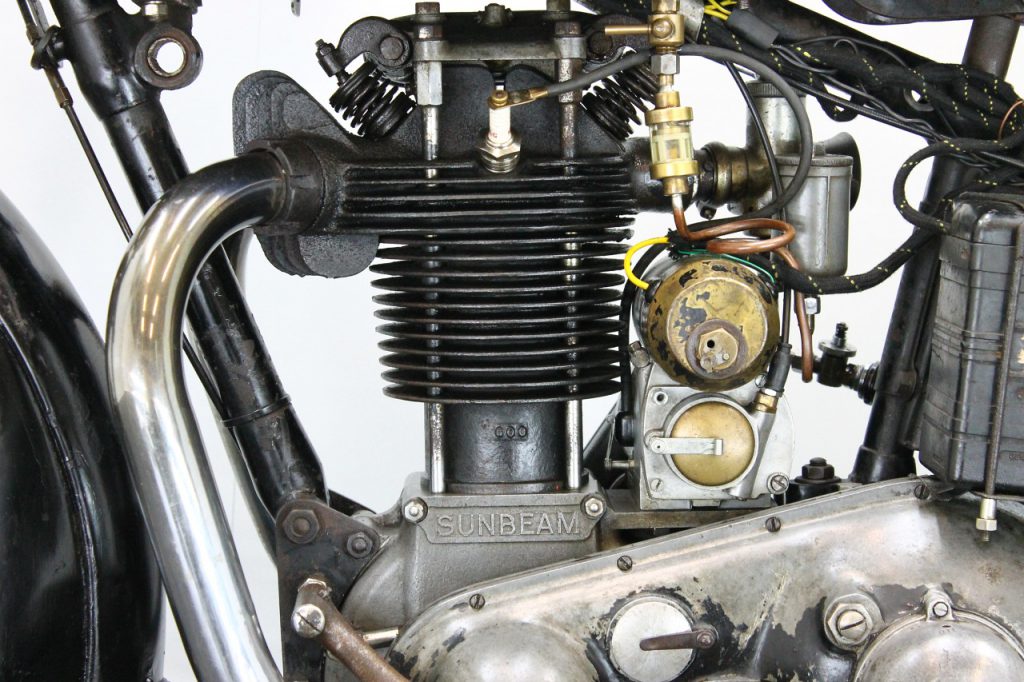
A new front fork was introduced which enabled the wheels to be removed without disturbing the brakes. Full enclosure of the rear chain became standard, and an instrument panel with clock and oil pressure gauge was fitted to the top of the petrol tank. A twist grip throttle was still only an option.
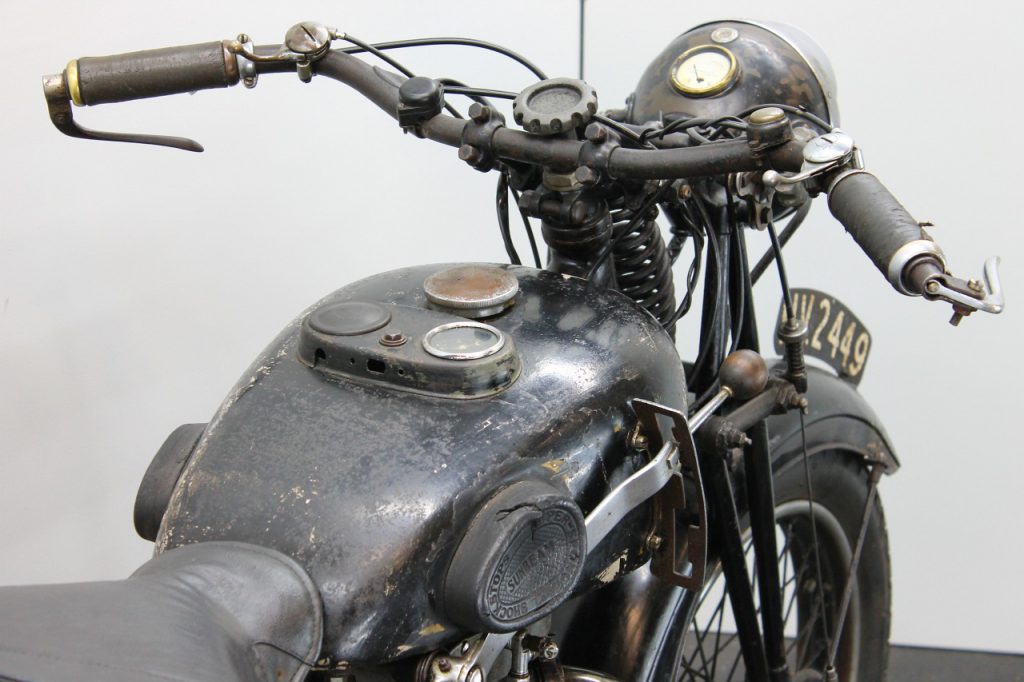
From 1932 on a 600cc version (Model 9A) was marketed, with engine dimensions of 88×98 mm, giving 599cc.
The 599cc 9A was introduced for the 1932 season as the range leader for the touring range. And was derived from the well established Model 9, over head valve 499cc single with which it shared many components.
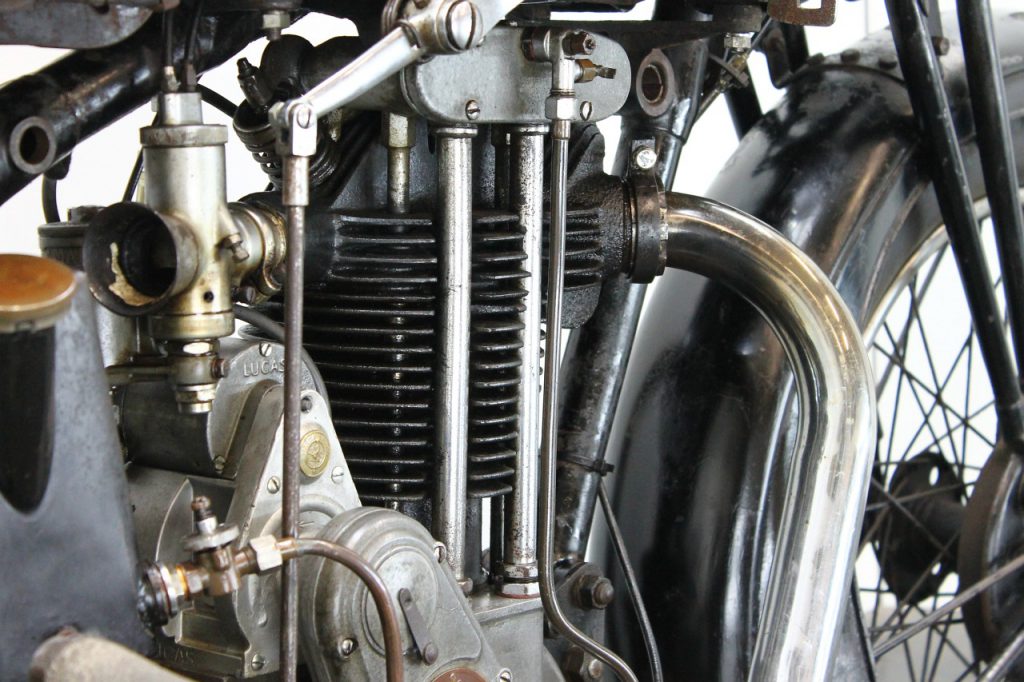
The two port 600cc OHV engine let it drive fast ahead on the road. This powerful bike is equipped with an Amal carburetor, Lucas MagDyno, Eureka oil pressure gauge, ammeter, Lucas lighting set and twist grip throttle which was an option in 1932. It runs wonderful and has been used regularly in last years.
New features for 1932 were: Sunbeam 4-speed gearbox and a new fork with revised brake, a tank top panel which holds Smith clock and oil pressure gauge and a new rocker box – with feed pipe from the oil pump – with fully lubricated rocker gear.
| Year | Total | L’stroke, Mod 6, 5 (’27-’30), Lion 500 | 4.1/2HP, Mod 7, Lion 600 | Mod 1 & 2 | Mod 8 | Mod 9 | ParallelMod 8 (’24-’26) Mod 80 | ParallelMod 9 (’24-’26) Mod 90 | Mod 10 | Mod 9A | Mod 14 L’stroke | Little 90 (’33), Little 95 (’34-35) | Mod 95, 95R, 95L | Mod 16 Hi Cam | Model 9 Sports | Light Solo & Solo Sports | AMC, B & C Series |
| 492cc SV | 598cc SV | 347cc SV | 347cc ohv | 493cc ohv | 347cc ohv | 493cc ohv | 344cc ohv | 596cc ohv | 246cc ohv | 246cc ohv | 493cc ohv | 248cc ohv | 493cc ohv | 493cc ohv | various | ||
| 1930 | 165 | 22 | 2 | 9 | 27 | 86 | 2 | 15 | 2 | ||||||||
| 1931 | 130 | 27 | 2 | 2 | 70 | 17 | 11 | 1 | |||||||||
| 1932 | 94 | 15 | 18 | 3 | 31 | 12 | 2 | 13 | |||||||||
| 1933 | 74 | 8 | 14 | 12 | 12 | 2 | 10 | 5 | 5 | 2 | 4 | ||||||
| 1934 | 77 | 14 | 6 | 9 | 12 | 8 | 3 | 6 | 19 | ||||||||
| 1935 | 106 | 10 | 7 | 19 | 24 | 12 | 2 | 0 | 13 | 19 | |||||||
| 1936 | 114 | 10 | 3 | 21 | 38 | 4 | 30 | 1 | 7 | ||||||||
| 1937 | 83 | 3 | 6 | 16 | 16 | 7 | 22 | 13 | |||||||||
| 1938 | 34 | 1 | 8 | 5 | 2 | 1 | 8 | 9 | |||||||||
| 1939 | 50 | 0 | 1 | 1 | 1 | 47 | |||||||||||
| 1940 | 5 | 5 | |||||||||||||||
| TOTALS | 932 | 110 | 67 | 9 | 114 | 292 | 4 | 54 | 15 | 51 | 70 | 8 | 36 | 20 | 7 | 23 | 52 |
Sales continued to drop. In another attempt to reduce production costs, ‘Lion’ was upgraded with a removable cylinder head, and the Model 90 was produced only in small quantities, because it was expensive in assembly, since most of the machines were assembled manually. Production of the Model 10 has been stopped and the old 350cc Model 8 has been re-entered again.
Specifications of Sunbeam Model 9A
| Manufacturer | Sunbeamland, Wolverhanpton, Great Britain |
| Years of manufacture | 1931-1938 |
| Quantity produced, units | 51 |
| Price | 84 £ |
| Today’s value | 5 441 $ |
| ENGINE AND TRANSMISSION | |
| Type | Single cylinder, OHV |
| Engine capacity, cc | 596 |
| Bore and stroke, mm | 88 х 98 |
| Engine rating | |
| Sparking | Magneto Lucas |
| Carburetor | Amal |
| Battery | |
| Clutch | |
| Transmission | 4-speed, hand gear |
| FRAME AND WHEELBASE | |
| Frame type | Single front down tube |
| Front suspension | Parallelogram “Webb” |
| Rear suspension | Rigid |
| Brakes | Drum type |
| Wheel size | |
| DIMENSIONS | |
| Length, mm | 2 083 |
| Width, mm | 813 |
| Height, mm | |
| Wheelbase, mm | 1 372 |
| Ground clearance, mm | |
| Seat height, mm | 711 |
| Mass, kg | |
| Gas tank size, l |
11.4 |
| Maximum speed, km/h | |
| Range, km | |

